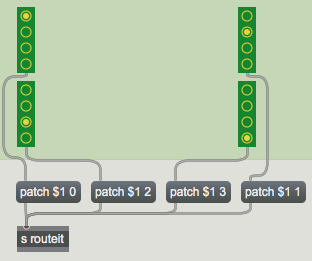


This is my implementation and slight development of an audio synthesis technique described by Peter Blasser of Ciat Lonbarde fame. It is thought that we anticipate the next rhythmic event based on previous events, but via a stochastic estimation mechanism (see e.g. Research suggests this is best modelled as both pulse-based and stochastic. It’s also slightly inspired by neuroscientific research on rhythm perception. It has the potential to avoid the rhythmic grid, and strong repetition, while retaining patterning that the ear can follow.
#Max msp objects code#
The object allows for direct control of some rhythmic elements within an overall stochastic rhythmic environment.Įxternals, code and more info avaliable at github Why?įirst off, the overall shape of the thing is appealing to me: a fixed set of discrete units of time is strung together, and deformed, and this happens in a controllably random way. The process behind hyperuniform~ is my impressionistic take on the concept of “hyperuniformity in the disordered, jammed, packing of soft spheres”” as outlined in this paper. See the project page hereĪ signal rate, “stochastic” rhythm generator.
#Max msp objects generator#
The audio demos here are raw, to show the behaviour of the objects not examples of you would use them - that is left as an exercise for the reader.Ī set of objects for working with Central Pattern Generator neural networks in MAX/MSP. They are novel building blocks which I have used in my own music, and that could be used in 1000 other ways. None of these are in any sense complete instruments. These externals follow from those interests. Two of my interests in computer music are the use of non-linear dynamic processes, and the creation of rhythms which imply but evade a sense of pulse. This page collects the externals I’ve built for MAX MSP. Max msp index Projects Complexity Music About CV CPGs max msp max msp


 0 kommentar(er)
0 kommentar(er)
